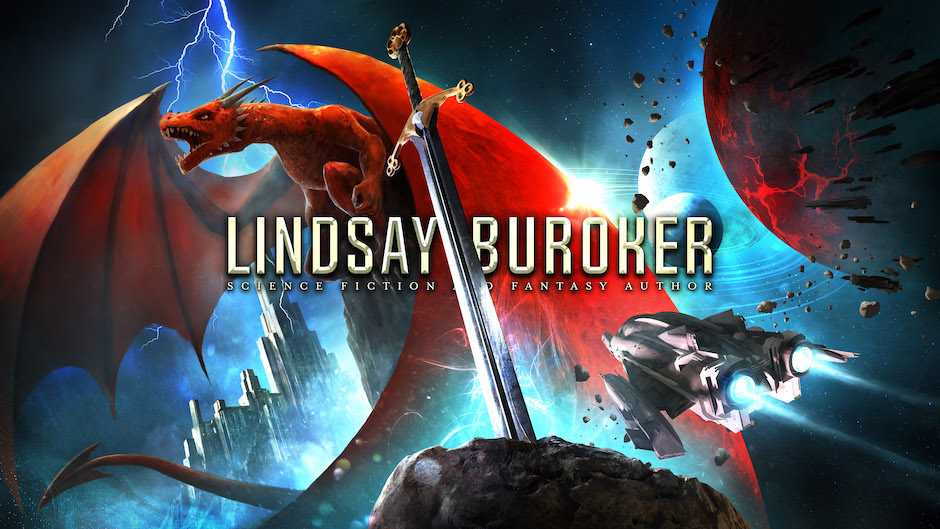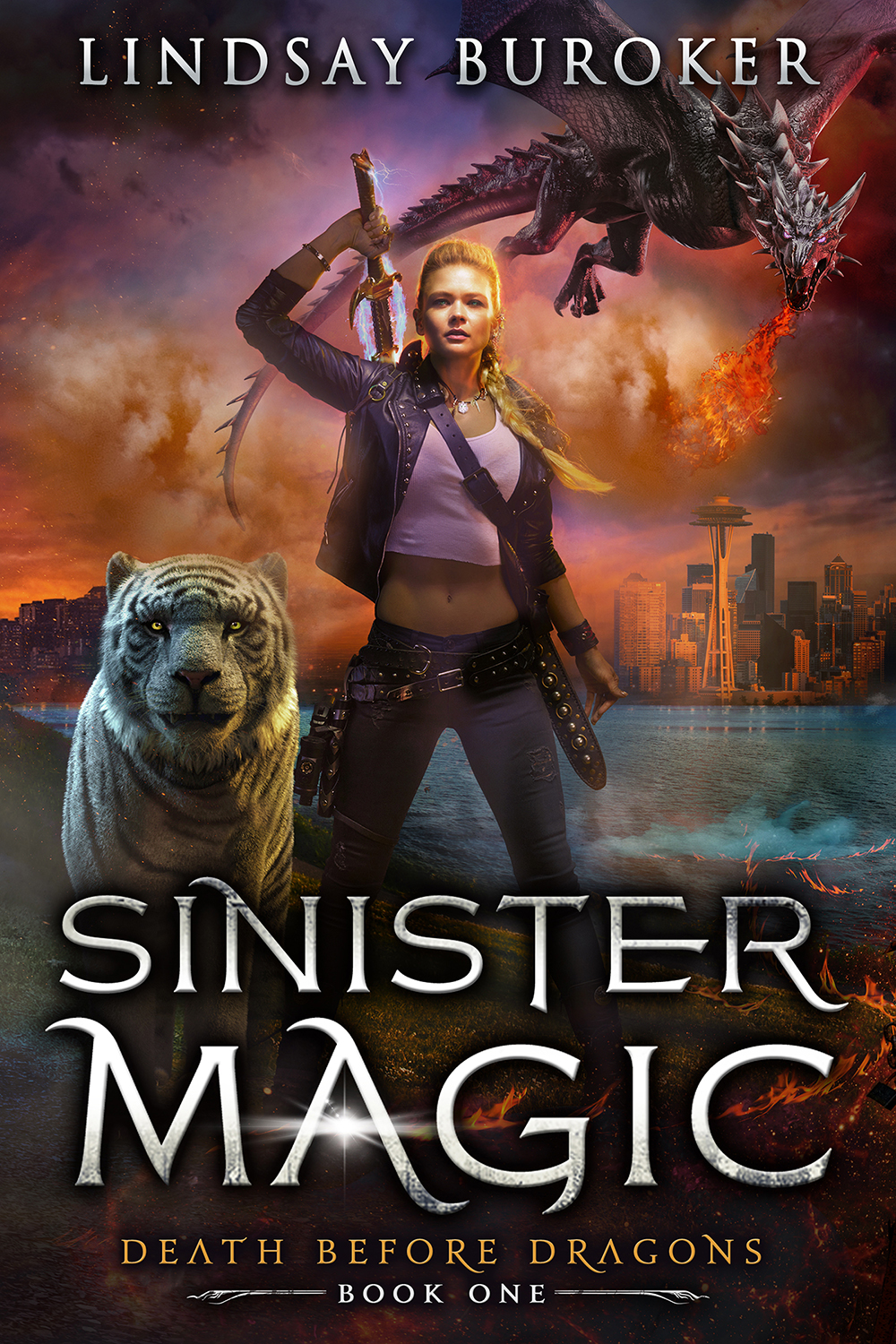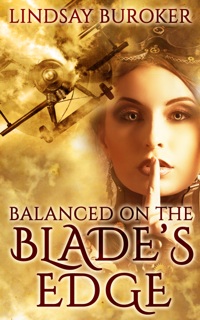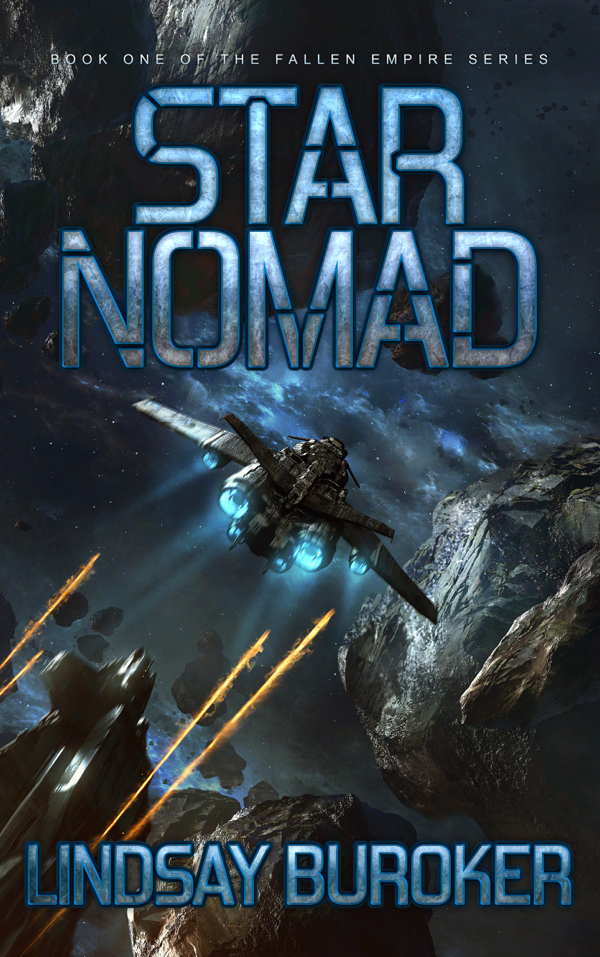In the indie author world, there are few topics as hotly debated as that of ebook pricing. You don’t have to spend long on a self-publishing forum to hear all sorts of advice:
- Don’t price too low or it shows you don’t value your work — if you don’t value your work, how can you expect anyone else to?
- Don’t price too high because people won’t spend that much on an unknown author.
- 99 cents is dead — don’t bother with 99 cents because you only get a 35% royalty.
- Never ever price your ebook at $1.99 — it’s the Bermuda Triangle of pricing!
- Price the first book in your series for free to draw in readers who might end up liking the book and buying the rest in the series.
- For crying out loud, don’t give anything away for free — people just download free books and never read them, and if they do read them, they’ll probably give you a crappy rating.
So… confused yet?
Long-time followers of my blog (or people who look me up on Amazon), will see that I take a middle-of-the-road approach. I have the first ebook in my Emperor’s Edge series permanently free, and most of the rest of the novels in the series are $4.95 (I do have Book 2 at $2.99 at the moment, which may or may not stay that way). For short stories, I either go with free or 99 cents (if it’s free it’s because it’s something I posted on my blog for free first, such as my recent holiday story, which was a thank you to readers). For novellas and short novels, I’ll price somewhere in between (these days, I try to write things that are long enough that I feel justified pricing them at $2.99, for the 70% royalty, or I’ll put the shorter things together in a collection).
Does that mean you should do the same thing? Nope. You should either do what makes you content (allowing that you might be leaving money on the table, because you’re pricing based on your own opinions rather than experimentation) or you should experiment to see what earns you the most money per month.
That last bit sounds kind of obvious, doesn’t it? Yet a lot of authors balk at the idea of trying different prices and seeing what the market says. They price based on their own hunches and prejudices.
They think, “Oh, I wouldn’t value a 99-cent book, so I’m sure others won’t either.” Or maybe they think, “I put XXX hours into writing and preparing this novel, and there’s no way I’m selling it for less than $X.XX.” Or perhaps it’s, “Nobody’s heard of me, and I doubt they’re going to pay much for an unknown author, so I’m going with 99 cents.” The argument I’ve seen most often and which is, quite frankly, one of the more short-sighted ones, is: “If I don’t sell my book for at least such-and-such, I’m not going to have a chance of making minimum wage for the work I put into it.”
I want to address the last argument, because I see variations of it so often. First off, before we jump into numbers, I want to point out that very few authors make any significant money on their first book — nobody owes us minimum wage or any other amount of cash. This whole process is like building a business, and for most of us the income grows over time as we get more books out, especially when we’re talking about e-publishing, where titles can remain out there and can continue to sell indefinitely.
The second thing I want to point out is that the price of the book is only half of the earnings equation. The other half is how many copies you sell.
Price * Units Sold = Total Earnings.
We’ll keep it simple and not worry about royalties and what the store makes vs. what you make. My point is that it’s possible to become a millionaire on a 99-cent title, just as it’s possible to make absolutely nothing. You may make more money selling your books at less than your ideal price (i.e. what you feel the book is worth). That’s just how it is.
But anyway, let’s talk numbers and kick around a couple of scenarios (AKA how do we get to minimum wage, anyway?). Let’s say you go bargain basement and make your first novel 99 cents. Because it’s at the 35% royalty, you’re only making about 35 cents on each sale. Let’s say you bust your bum on marketing and sell 100 copies in your first month. That earns you… $35. Yeah, cringe, right? Not even close to minimum wage. If you keep that up for the whole year, you get $420. Still not that impressive. Latte money, maybe.
But — and here’s where so many people get tripped up — you really have to consider earnings over the life of a book, not over a month or even a year. Over ten years, that title could bring in $4,200 if nothing else changes. There’s always the possibility that it will start selling better as you get more titles out and gain more of a following as an author, but let’s assume it stays the same.
$4,200 in ten years still isn’t that impressive (and it’s why I’m not a big proponent of the 99-cent novel unless it’s part of a sale or on-going strategy to get readers into a series). Let’s say you had priced that novel at $2.99 instead. It would earn (at a 70% royalty) $2.05 a sale. Maybe you’re only able to sell 50 copies a month, instead of 100, because of the higher price point. That brings your earnings up to $102.50 per month and $1,230 a year. A little better. At $5 it gets better still, though you may or may not sell as well at the higher price point. This is where the experimenting comes in. Try a month with it at one price, and then try a month with it at another price.
Some authors actually sell better (more books) when they raise their prices, though most of us find it easier to move more copies as the price lowers. If we want to maximize our monthly income, we have to play around and find the point of diminishing returns. I want to emphasize again that for those of us who can take emotion and pride out of the equation, the focus should be on monthly income and not on the price of the book at all.
*This is the point where I admit that I might be leaving money on the table because I don’t experiment all that much. I’ve sold them for less, but I’ve never tried selling my ebooks for more than $5. Remember up above where I said some people prefer to do what makes them content, even if it’s possible they’re not making as much as they could? That’s me. I’m comfortable with what I make, and I like the idea of keeping my ebooks a good value for readers. I’m not sharing my earnings with an agent or publisher, so this just seems fair to me. But if you’re not content right now, and you want to be earning more… I urge experimentation.
The more books, the more potential you have to earn
Here’s another one that seems obvious but which again gets overlooked, especially by those who bring the “But I want to at least make minimum wage” mindset to the table. Remember that $1,230 a year we’re earning from our $2.99 ebook that’s selling 50 copies a month? Let’s jump forward to the point where we have 10 novels, some novellas, and a few short stories out (that’s me right now, after three years of self-publishing). If all of your novels are selling 50 copies a month at $2.99 (for the record, I’m a mid-list author at best, and my worst selling novels sell quite a bit better than that), you’re now making $12,300 a year from your novels and probably a couple of thousand extra from your shorter works. So, yay, we’ve reached minimum wage.
That’s a pretty conservative estimate of what you could make with that much work out. If, in the process of publishing these novels, you’re able to gain some true fans, the types of people who tell their friends about your work, you might find that 50 sales a month per novel is very beatable (with a little spent on advertising here and there, my EE novels are still selling 300+ a month, though I’ve completed the series and moved on to other things).
You might also find that you have a break-out novel or two in the bunch. A couple of years ago, JA Konrath published his stats for his $140,000-month and we saw that a handful of his 40+ titles were responsible for the majority of his income. I talked about the Pareto Principle in that article, also known as the 80-20 rule. In our cases, it may very well end up that 20% of our work results in 80% of our income. My distribution isn’t quite so lopsided, but my EE series does account for the majority of my earnings. Back when I built websites and wrote content for a living, two of my 10-15 sites brought in the majority of my income. This kind of distribution happens all over the place. For most of us, the only way to have those breakout books is to publish a lot of books. It’s very hard to predict what will become a winner, but the more titles you have out there, the better your odds.
But I’ve drifted off topic a bit here. It never hurts to point out that for the majority of authors it’s going to take a lot of novels to build a full-time income, but my ultimate message here is to try and maximize your overall monthly income rather than getting hung up on the price of a particular book. Try free. Try 99 cents. Try 2.99. Heck, try 7.99 or 9.99 if you want. Experiment. Keep track of what works, and if you find that you make the most money pricing your ebooks at $0.99 or $4.32, then by all means, do so.




LOVE this post. Thanks for yet another helpful, insightful look at e-publishing. At some point the book-making money becomes similar to passive income. The work’s been done but the money continues to come in, however slowly, over time if all goes according to plan. A great reminder!
Great points. MOST of the authors I see giving the advice to price higher have crappy Amazon sales rankings. I don’t think we all have to sell at 99 cents but I’ve definitely noticed that a lot of the best sellers are under four dollars.
I discovered something very interesting this weekend. There are about 7.5 million adults in the U.S. who read more than 100 books a year. That’s 3% of the adult population. And we (because I’m one) read somewhere between 750 million and 1 billion books a year, more than 25% of all the books that get read. I base this on a re-analysis of the raw data from one of Pew Research’s surveys where they asked people how many books a year they read. Pew is perhaps the only survey company that publishes their raw data (with the weighting factors!). So I’m in the midst of seeing what I can figure out about the reading public, but this factoid just blew my mind.
Since I have mentioned this in a couple places in the comments section, some power readers have “outed” themselves. So far, I’ve found a fairly consistent pattern of behavior. Power readers are constantly searching for new authors and new series. We like a free or discounted book to try out and then, if we like the writer, we work our way through everything they have. The good new for writers is that you will have multiple chances to get a power reader’s attention. There are some who won’t even look at an author until they have 5 or 6 books out.
A lot of power readers are women who read mostly romance, but most power readers appear to be read multiple genres. I’m still working on doing more analysis, but when indie authors think about pricing, this is almost certainly the target market.
[The strangest thing about this fact is that as best I can tell, no one knew this*. Doesn’t anyone in traditional publishing do real market research?]
*Of course, Amazon knows this because a huge chunk of us are their best customers. But they don’t see any advantage in giving away that sort of proprietary data.
That’s another reason I like to keep my prices on the lower side. I suspect a lot of those folks are people who used to check out the majority of their books from the library (my mom is one of them), which is a necessity for lots of people who read that much. Buying them all just isn’t feasible. But now a lot of them *are* buying more because they like their e-readers and the convenience of shopping at Amazon or wherever, but a hundred or more books a year sure adds up in the pocketbook!
This! I’m not quite a power reader, though as I’m half way through my 13th book for this year so close enough).
I’m always looking for new authors and love it if they have back catalogue that I can strip-mine. Crime, fantasy, sci-fi, some genre romance, YA, they’re all grist to my mill. All except horror that is.
There are authors I’ve found who’s print books are OOP, and I’d buy the lot if they were available as eBooks.
William, I saw your comment on PG, and found it really interesting, but it wasn’t until I saw it paired with KKR’s market segmentation post that the lightbulb went on over my head.
Publishing has been decrying the death of bookstores selling new books – but the real power-readers I know all haunted used book stores, once they’d run out of material at their library. (At $30/hardcover and $8-$9/paperback, they couldn’t afford reading 100-300 new books/year.)
And the “indie price point” (0.99 to 4.99) is right in line with used book prices. What market are we really targeting? How big is it? Has anyone ever run the numbers to define the used book sales in the USA, or Canada, or any country?
Romance readers are the most obvious prolific readers – and the biggest buyers of new books that I know. However, take a thoughtful look around the discount book stores, and the used book stores – what are the biggest sections there? What really moves, when publishers aren’t pushing it?
In Australia print paperbacks are between AU$25-30, and I was a local library regular (we know each other by name) and second hand book shops. Simply because at that price I couldn’t afford my reading hobby.
Now I have an eReader, I’ve been buying books like there’s no tomorrow. I’ve gone from 1-2 new books a year to buying 50+ and more new authors. I still borrow from the library, but have room for eBooks and spend more now than before my reading went digital.
Anecdotal data…
Bought about 500 books/year as ebooks in the last two years. Many are free or $0.99, of course, but many are full price traditional, too. Typical power reader. A few but not many are romance (mostly SF&F, Mystery/Crime/Thriller, other).
It may slow down a bit going forward now that I’ve slurped up some backlists, but reading several/week is no stretch at all, at all.
This seems right on the money to me. I just looked over my Amazon history for the year so far – I’ve bought 114 fiction books (57 SF/Fantasy, 41 Mystery/Thriller, 13 Romance/Erotica, 3 General Fiction) and 44 non-fiction books (wide mix of topics). About half of the fiction is print and half ebooks; the non-fiction is almost all print. I’ve also bought an unknown number of books from B&N, both print and ebooks (I used to have a Nook and switched over to Kindle a couple of months ago). I haven’t read all of these yet and some of them I probably won’t get to. But I’ll read most of them.
I am *always* looking for new authors and I love it when they’ve got a series out because I know I’ll have a lot to read from them if I like their work. I’m a little leery of buying the first in a new series unless the author has a track record with finishing other series – a product of being burned by fanfiction WIPs that are never finished. (For series that are supposed to wrap up, I mean, not the ongoing sort.)
Books priced at $2 and down I buy without hesitation if the blurb and/or sample chapter looks ok. If the blurb/sample chapter looks really good, I’ll go up to $5 for a first book in a series or a standalone. And once I find an author I like, I’ll buy pretty much everything they write. The comment about having multiple chances to get a power reader’s attention is absolutely right for me. I may not hear about the first four books, but if I like the look of the fifth book, I’ll buy them all.
“This whole process is like building a business”
My sis-in-law opened a business. She did tons of research before doing so. Designed a business plan. Found the best location for her type of business. And she promoted the hell out of it. (She was in marketing and promotion before she headed out on her own.) Actually, she still promotes the hell out of it (and gets lots of free publicity by sponsoring charity events and such).
My point is, for the first two years, she paid herself NOTHING
Dang it, hit the wrong button somehow…
To continue: My sis-in-law worked her tail off and plowed everything she made back into the business. She didn’t make minimum wage. She didn’t make any wage. But now, five years later, her business is thriving. And yes, now she gets a paycheck, too.
If you take a short-range view of your business (and writing for money IS a business), your business is likely to be short-lived. Keep your eye on the future, and maybe your business will HAVE a future.
Some nice points, Lindsey, and reasonably argued. Thanks for the perspective.
William, I saw your posts on the ‘power reader’ over on Konrath’s blog as well. It’s intriguing.
I also have an intuition (not backed up by any facts, numbers or anything) that many of these avid readers are also book bloggers and submitting books to them to review is a way in the door to getting their attention. Not sure it really results in sales since most if not all of them get their books donated (for reviews). But I’ve noticed that some of the book bloggers really do appreciate ‘discovering’ someone. And maybe, looking at the long run aspect – as Lindsey stresses – getting on their radar is a good thing.
At least that’s my hypothesis so far.
Maybe some of the others have some ideas/takes on that? And experiences with giving books away as a targeted action?
I agree–you just have to try various pricing. I don’t think the free works as well as it used to. It’s interesting to me that during the buddy reads we do at my blog how many readers will read the first, free book and not continue the series (a lot).
Well, I guess I’m doing everything wrong. I’m publishind a novel in 4 parts. Each will be priced at $1.99 and I’m discounting Part 1 to $.99 for a week. And it’s in a new genre from what I generally write. And I’m not doing any marketing other than an announcement on my facebook page and emails to a few people on my mailing list.
I’ll let you know how it goes. So far I’ve sold 10 copies at the discounted rate. It goes to $1.99 tomorrow. Part 2 will be available in a few weeks.
Merrill Heath
Ah, “serial” novels. I hear a lot of writers are trying that.
As a reader, it’s not something I would ever buy. Good luck with it!
Thanks for putting this in perspective. I’ve seen all the “advice” in your bullet list multiple times, and it’s good to read a no-nonsense take on it. I price my full length novels at $3.99 and my novellas at $1.99. The novellas sell horribly, but I think it’s more to do with the possibility that most readers want a full length book rather than they’re scared off by a $1.99 price. The novellas are part of a series, so I’m toying with bundling them together as one download for $2.99 and seeing if that does any better.
Thanks again.
I tend to price by word count. Starting at .99 and going up to (currently) $4.99. But I’m going to launch an experiment by releasing a large collection of short stories for $6.99 and see how it does. As it stands, I make enough from my books to pay my editor and artists. Still not making the big bucks, but getting there.
Great advice! Especially prior to publishing. I’m going to make myself remember this.
I like your middle road approach, Lindsay. I feel like the different advice out there can be overwhelming. I’ve basically just been looking at other books in my genre to determine pricing, and that’s worked for me (so far).
I’d also like to back up that sometimes things do sell better when priced higher. I currently have a novel that is $4.99 (ebook), $14.99 (paperback), and $24.99 (hardcover). Guess which one is selling best? I never thought the hardcover would do that well. It just goes to show that it pays to experiment!
Pingback: Blogs for Self-Publishers, January 25 – 31, 2014 — The Book Designer